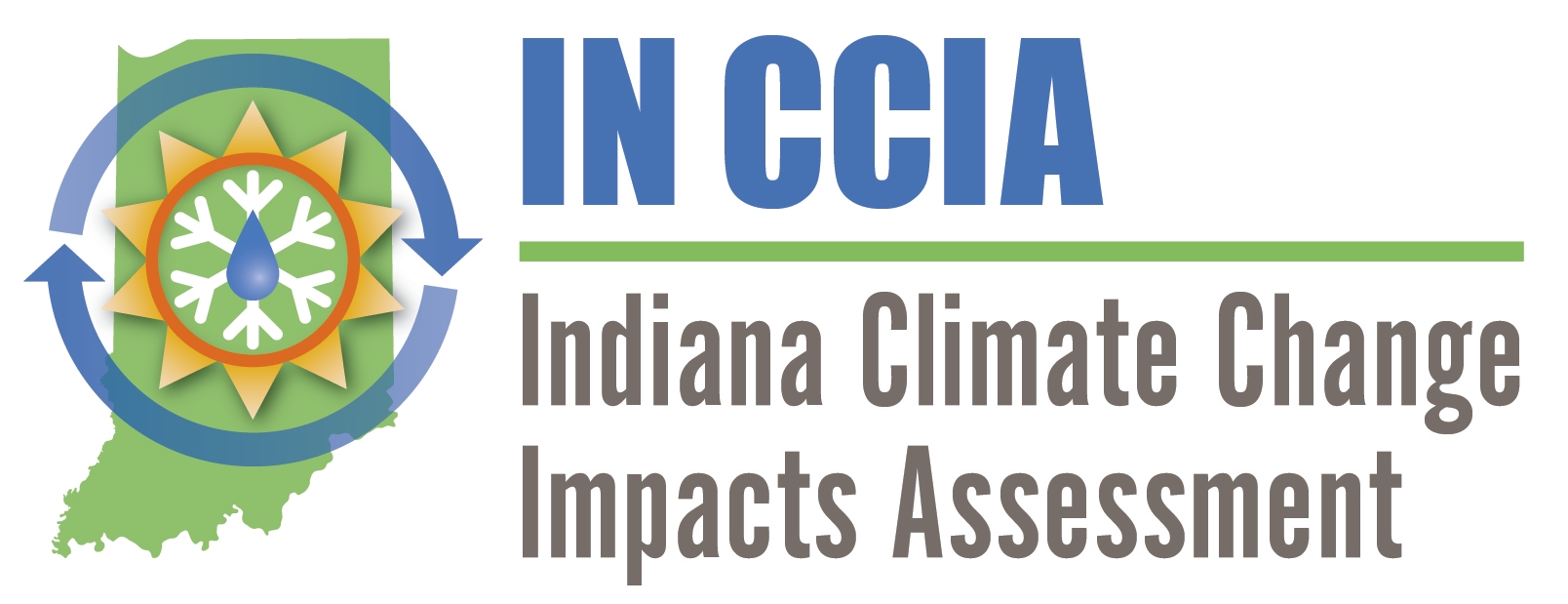
Climate Change Publications
Abstract
Using an ensemble of 10 statistically downscaled global climate model (GCM) simulations, we project future climate change impacts on the state of Indiana (IN) for two scenarios of greenhouse-gas concentrations (a medium scenario--RCP4.5, and a high scenario--RCP 8.5) for three future time periods (2020s, 2050s, 2080s). Relative to a 1971-2000 baseline, the scenarios project substantial changes in temperature for IN, with a change in the annual ensemble mean temperature for the 2080s RCP8.5 scenario of about 5.6 °C (10.1 °F). Such changes also indicate major changes in extreme temperatures. For southern IN, the number of days with daily maximum temperatures above 35 °C (95 °F) is projected to be about 100 days per year for the 2080s RCP8.5 scenario, as opposed to an average of 5 days for the historical baseline climate. Locations in northern IN could experience 50 days per year above 35 °C (95 °F) for the same conditions. Energy demand for cooling, as measured by Cooling Degree Days (CDD), is projected to increase nearly fourfold in response to this extreme warming, but heating demand as measured by Heating Degree Days (HDD) is projected to decline by 30%, which would result in a net reduction in annual heating/cooling energy demand for consumers. The length of the growing season is projected to increase by about 30 to 50 days by the 2080s for the RCP8.5 scenario, and U.S. Department of Agriculture hardiness zones are projected to shift by about two half zones throughout IN. By the 2080s, all GCM simulations for the RCP8.5 scenario show higher annual precipitation (P) over IN. Projected seasonal changes in P include a 25-30% increase in winter and spring P by the 2080s for the RCP8.5 scenarios and a 1-7% decline in summer and fall P (although there is low model agreement in the latter two seasons). Rising temperatures are projected to result in systematic decreases in the snowfall-to-rain ratio from Nov-Mar. Snow is projected to become uncommon in southern IN by the 2080s for the RCP8.5 scenario, and snowfall is substantially reduced in other areas of the state. The combined effects of these changes in T, P, and snowfall will likely result in increased surface runoff and flooding during winter and spring.
Keywords
Indiana, climate change impacts, CMIP5, hybrid delta, temperature, precipitation, length of growing season, hardiness zones, cooling degree days, heating degree days
Date of this Version
2018
Recommended Citation
Hamlet, Alan; Byun, Kyuhyun; Robeson, Scott; Widhalm, Melissa; and Baldwin, Mike, "Impacts of Climate Change on the State of Indiana: ensemble future projections based on statistical downscaling" (2018). Climate Change Publications. Paper 1.
https://docs.lib.purdue.edu/climatepub/1


Comments
This is the author accepted manuscript of Hamlet, A., Byun, K., Robeson, S., Widhalm, M., and M. Baldwin. (2019). Impacts of Climate Change on the State of Indiana: Ensemble future projections based on statistical downscaling.Climatic Change. https://doi.org/10.1007/s10584-018-2309-9. Copyright Springer, the version of record is available at https://doi.org/10.1007/s10584-018-2309-9.